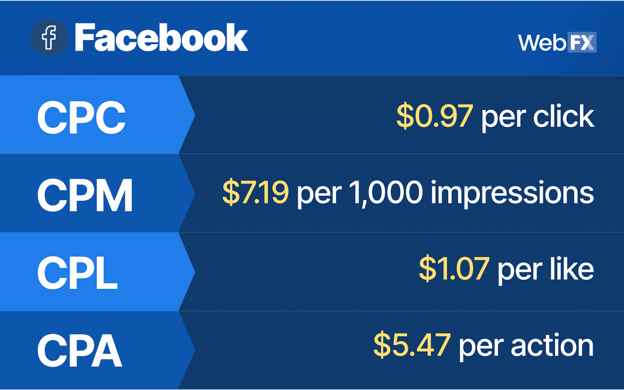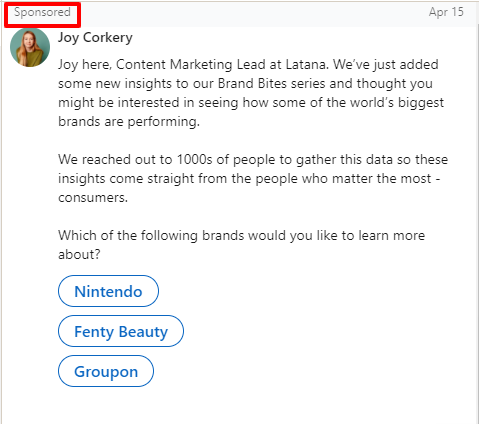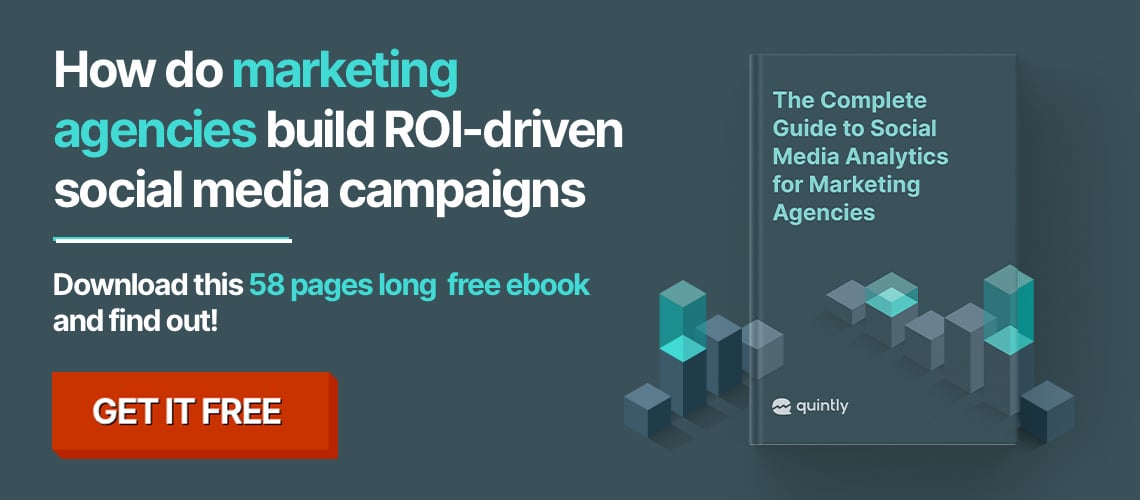
Organic or paid social media? Truth is, you need both!
A solid social media marketing strategy requires that you combine both paid and organic. The key to success is to strike a balance that works best. In this comprehensive guide, we will discuss some of the pros, cons, best use cases, and strategies on how to turn organic and paid social media to your advantage.
The number of active social media users is 4.2 billion. There is no doubt that social media is a powerful platform that businesses can use to reach their marketing goals.
When marketers are designing their social media marketing (SMM) campaigns, one fork in the road they encounter is the debate around organic vs. paid social media.
If you’re in that situation where you’re pondering which to use, we’ve got you covered.
However, right from the onset, you should know that you’ll want to do a bit of both as a business. Used in conjunction with landing page builders like Clickfunnels or its alternatives, both organic and paid social media are excellent for lead generation.
But to know which to lean on more, you must know the pros and cons of each and its best use cases.
But before we dive into which strategy is best for you between the two, let’s briefly take an in-depth look at each one.
What is Organic Social Media?
Organic social media posts refer to content you share on your social media platforms without paying for reach and engagement. Organic posts are seen by people in your network. However, if your followers interact with your content, your content’s reach expands to your second and third-tier connections, resulting in your reach expanding exponentially.
Executed well, your organic social media campaign has the potential to reach a significant portion of the 4.2 billion social media users in the world.
Pros of Organic Social Media
Of course, the most significant advantage of organic social media is that it’s free. However, organic social media has other benefits that include:
Affords a Direct Connection to Your Customers
A significant benefit of organic social media that all brands should take advantage of is the direct connection to customers it enables. This connection makes it possible for you to interact with your customers at any time of day. It’s this direct access that makes social media such a powerful customer service tool.
Bolsters Brand Identity
With the competition for customers becoming stiffer with each passing day, differentiating yourself from the competitors is essential. To do that, you must develop a brand identity and project it well. Social media is an excellent tool to project your brand identity and personality.
Cons of Organic Media
Like all free things, social media has some drawbacks. Here are some of the most prominent ones:
Time-consuming and Laborious
While social media is fun and entertaining on a personal level, it can be laborious and time-consuming when used to achieve business goals. There are so many activities to do if you’re to keep your audience engaged and ever-growing.
Results Take Time
Another significant disadvantage of organic social media is that it takes time to see results.
Best Use Cases of Organic Social Media
You can use organic social media to achieve so many business goals. Some of its best use cases include:
- Promoting an existing product.
- Establishing an authoritative brand presence.
- Reputation management.
- Inform users about a new product or feature.
- Share content and industry news.
- Drive traffic to your website.
You can use organic social media to achieve many social media goals. While it may be limited in its applications and impact, it still plays an essential role in social media marketing.
The key to succeeding with organic social media is to be creative with your post. For example, video has fast become the most consumed content format on most social media platforms, not just YouTube. Give people what they want by using professional video editing tools to create captivating video posts.
What is Paid Social Media?
As the name suggests, paid social media refers to paying social media platforms to increase your content’s reach and engagement. Most social networks use one of two methods to charge for sponsored content:
- Cost per click (CPC). This is where you pay for every click on your ad or content.
- Cost per mille (CPM). CPM means you pay for every 1,000 impressions your promoted content gets.
You can sponsor any type of content on social media, from ads to visuals to text-based content.
Pros of Paid Social Media
Organic social has many drawbacks that paid media more than makes up for. A few such advantages of paid social include:
Advanced Targeting
Sponsoring your posts on social media gives you access to the data each platform collects on its users. This enables you to create content or ads that are hyper-targeted to your audience.
And if your social media platform doesn’t provide you with enough data, you can use a third-party tool like quintly to dig it out for you. The data you get will help you create optimized iterations of your SMM campaigns.
Faster Results
Because promoting your content enables you to reach a wider audience, you enjoy the benefit of achieving your social media marketing goals faster. One reason for this is that paid social media works with algorithms designed to sort posts by relevance. This is to ensure that your content is immediately placed in your target audience’s feed.
Greater Reach
One of the most significant advantages of sponsoring your posts is that it gives you greater reach. With paid social, you can easily reach users who are not in your network and yet are likely to be interested in your product.
Cons of Paid Social Media
Great as paid social is, it has some caveats you must know before you dive in.
Ad Space is Limited
Limited ad inventory means the competition is high. Of course, if you’re in a competitive niche, that means you’ll have to pay more per click.
Needs Time and Close Attention
For best results, paid social media campaigns require constant monitoring and analysis. Thankfully, you can use sales funnel tools or social media analytic tools like quintly to make this part of SMM easier.
Best Use Cases of Paid Social Media
In case you’re wondering, paid social has several situations in which it makes sense to invest in. Here are a few notable instances:
- Brand awareness
- Lead generation
- Promoting a post that is doing well organically
- Boosting sales
- Retargeting website visitors
- Driving website traffic
A well-planned paid social media strategy will help you gain a lot of mileage in reaching your marketing goals. While you may have to pay-to-play, the returns are usually worth every penny you spend.
5 Strategies for Executing an Impactful Social Media Marketing Campaign
As said, an effective SMM campaign requires that you implement both organic and paid activities. A few strategies you can include to ensure your SMM campaigns yield fruit include:
1 - Know Your AudienceThe first step to crafting an impactful SMM campaign is to conduct audience research. Knowing your target audience is essential as it helps you know:
- Their pain points and aspirations.
- The type of content they resonate with.
- The times they’re most active.
This data is critical to creating campaigns optimized to drive engagement. And getting it isn’t as daunting as it may seem. All you need is a social media marketing tool that can scrape data from your followers’ and competitors’ profiles.
2 - Determine Your Most Effective Social Media Channels
Another critical element of designing an impactful SMM strategy is to determine your most effective social media channels. With so many social media platforms around, being active on all of them will only wear you thin and render your campaigns ineffective.
To determine which platforms to focus on, you need to know your audience demographics and understand their psychographics. In short, you must know whom you’re targeting and what motivates their decisions. For example, if your audience loves video-based content, you can use webinar software to create and host webinars to attract and engage your target audience. If they like your content, it’s highly likely they’ll follow you on social media.
3- Set Goals and KPIs for Your Campaigns
Before you launch your SMM campaign, you must know what you want to achieve. You must set goals for your campaigns. For example, do you want to:
- Generate leads
- Drive sales
- Grow your network
- Boost brand awareness
- Manage your reputation
Once you’ve determined what you want to achieve with your campaign, you need to know how you’re going to measure your progress. To do this, you must define the metrics and the key performance indicators (KPIs) you’ll use to keep track of your campaign. Examples of KPIs include:
- Number of leads
- Sales
- Number of followers gained
- Reach/impressions
- Engagement
- Clickthroughs
Setting goals and tracking them will ensure that you know whether your strategy is working or not. Make sure to track both organic and paid metrics on all your platforms. This will help you know where to spend more of your advertising spend. It will also give you insight into which platforms give your organic content the best results.
4 - Conduct Competitor Analysis
Competitor research is a critical part of any effective SMM strategy. A primary reason for this is that your competitors attract the same target audience as you do. Looking into their strategy will give you insight into:
- Platforms they’re succeeding on
- Content formats that drive engagement
- Strategies that are working (and not working) for them
The goal of conducting a competitor analysis is not to duplicate what your competitors are doing. Instead, it’s to gain insight into what you should incorporate in your strategy and the pitfalls to avoid.
5 - Create Content Your Audience Will Love
Your social media marketing is dependent on the content you create, for this reason, make sure to create content that will help you achieve your social media, and ultimately, business goals.
To do this, you must design a social media content strategy that includes:
- A social media calendar
- Themes and topics to focus on
- Keywords and hashtags to include
- Platforms to create content for
Once you’ve created your content, click publish (or schedule your posts for publishing), and you’re all set.
Also read: {Guide} How to build a Social Media Content Plan
Social Media Marketing on Facebook — Organic vs. Paid?
With over 2.6 billion monthly active users, Facebook is the largest social media platform on the planet. That’s why every marketer, both in B2C and B2B, can’t afford to ignore it.
Using Organic Posts on Facebook
One of the best features of Facebook is that it offers a lot of options concerning the content formats you can use. Examples include:
- Plain text posts
- Photo posts
- Video-based posts
- Live video posts
- Linked content posts
- Facebook stories
Thanks to the versatility of the posts you can post on the platform, it’s easy to maintain good engagement rates on Facebook — even on organic posts. All you have to do is create a post from your business page and share it with your community. The key, however, is to create posts that resonate with your audience - not just posts that talk about your brand.
Using Sponsored Posts on Facebook
Besides the massive reach Facebook offers, it’s also one of the most cost-effective social media platforms to advertise on.

To put it in perspective, the most expensive social media platform to advertise on in terms of CPC is LinkedIn ($5.26). In terms of CPM, Pinterest is the most expensive, with a CPM of $30.00.
There are two ways you run sponsored posts on Facebook:
Boosted Posts
Boosting a post means paying for an organic post to reach a wider audience on Facebook. Using the boost post option gives you access to a basic version of Facebook’s Ads Manager. With it, you can set a budget, target an audience, and set the period you want the campaign to run.
Facebook Ads Manager
Facebook Ads Manager allows you to take your campaigns to a more granular level than simple boosting. For example, you can:
- Set specific ad objectives
- Design ads that fit your goals
- Choose ad placement
- Use advanced targeting filters
Not sure when to boost a post or when to create a custom Facebook ad? To put it simply:
- If your goals hinge on engagement, use Facebook’s boost post option.
- If your goals hinge on conversions, then Facebook Ads Manager is the way to go.
Facebook is an excellent platform for both B2B and B2C marketers.
Social Media Marketing on LinkedIn — Organic vs. Paid
LinkedIn has been touted as the best social media platform for businesses. Because of this, it has traditionally been reserved for B2B marketing. However, savvy marketers have also realized its potential for B2C marketing.
Organic Social Media Marketing on LinkedIn
Like Facebook, LinkedIn also allows you to post different content formats. The main difference is the character limit on text-based posts. To maximize the impact of your LinkedIn marketing:
Be Human
Most posts on LinkedIn are stiff and too professional. While it’s predominantly a professional platform, this approach to content creation doesn’t cut it anymore. Be more casual in the way you create your content. LinkedIn users are human too, and they’re looking for content with a human touch — especially with the rise in remote work.
If writing is not your strong suit, you can also leverage podcasting tools to record podcasts and share them with your network. Nothing beats hearing someone’s voice when it comes to projecting your brand’s human side.
Leverage LinkedIn Stories
LinkedIn Stories appear at the top of your connections’ feeds. This makes them a powerful way of being noticed organically on the platform. Create videos or slideshows that strike a balance between educational and entertaining.
Drive Engagement with Polls
One of the best ways to drive engagement on LinkedIn is to create a poll. People love giving their opinion on a subject they’re passionate about. Find these topics and use them to create engaging polls.
Leverage LinkedIn Live
LinkedIn Live is another great way of getting noticed organically on LinkedIn. The only caveat is that you need a third-party streaming tool to broadcast live on LinkedIn. The bonus, however, is that LinkedIn sends notifications to people in your network that you’re streaming a live video.
Engage Your Employees
To increase your reach and drive engagement, ask your employees to share your brand’s content with their network. According to LinkedIn, employee advocacy helps generate a 2X clickthrough rate on your content.
Paid Social Media Marketing on LinkedIn
Organic content plays a crucial role in helping you discover the type of content that resonates with your audience. Once you know, extend your reach and drive more engagement by leveraging LinkedIn ads.

Examples of sponsored content you can use on LinkedIn include:
- Text ads. These are text ads with a company logo and feature in the sidebar.
- Programmatic display ads. This type of LinkedIn ad involves defining your target audience and setting your ad budget. The algorithm will present your ads to the largest audience possible for your budget.
- Sponsored Inmail. These are ads in the form of messages delivered in your target audience’s inbox.
- Dynamic ads. Dynamic ads are personalized ads that are hyper-targeted, resulting in higher conversions.
While LinkedIn paid ads are ranked among the most expensive, they bring a reasonable return on ad spend (ROAS) as most users on the platform have business intent.
Also read: 7 Tips for Successful Social Media Video Ads
Organic vs. Paid Social Media — Two Sides of the Same Marketing Coin
In the organic vs. paid social media debate, some marketers tend to favor one over the other. However, you will need both. As you plan your social media marketing strategy, make sure to plan for both organic and paid content.


Join the conversation. Leave us a comment below!